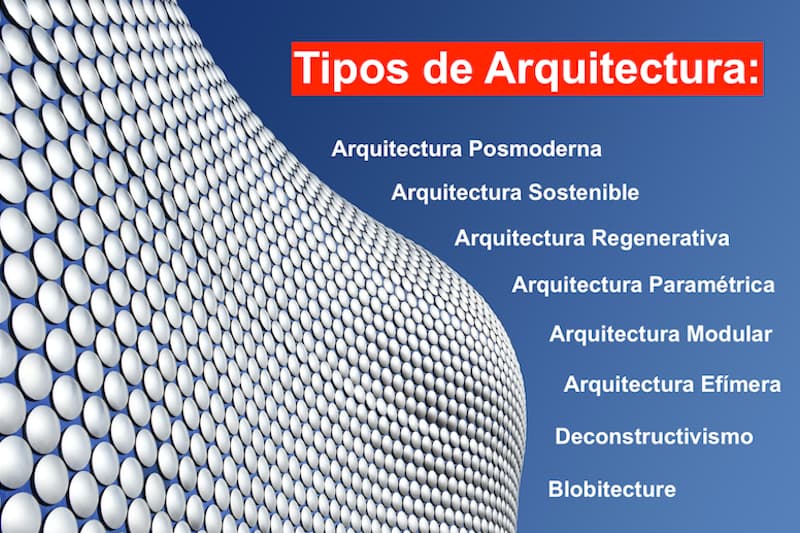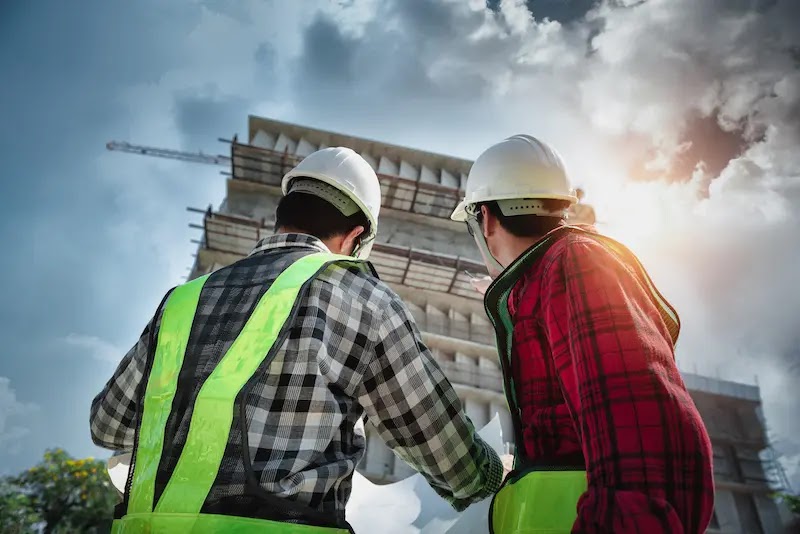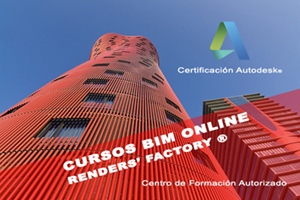- Inicio
- Arquitectura
- _RASCACIELOS
- __Burj Khalifa Dubai
- _Estilos Arquitectónicos
- __Arquitectura Posmoderna
- __Deconstructivismo
- Arte
- _Arte Universal
- _Escultura
- __Venus de Milo
- __Moisés de Miguel Ángel
- __El rapto de Proserpina
- __La Verdad Velada
- _Pintura
- __Capilla Sixtina
- __Cuadros Famosos
- __La Creación de Adán
- __El Nacimiento de Venus
- __Hipómenes y Atalanta
- __Silla de van Gogh
- __Cabeza de Medusa Caravaggio
- __Impresionismo
- __Posimpresionismo
- _Historia
- __Edad Moderna
- Curiosidades
- _Arquitectura y Arte
- _Tumba de Miguel Ángel
- FRASES
- _Frases de la semana
- _Arquitectos
- _Escultores
- _Pintores
- __Vincent van Gogh
- __Claude Monet
- __Henri Matisse
- __René Magritte
- CULTURA
- _Museos
- __Museo del Louvre
- Formación
- _Formación BIM Online
- _Cursos Domestika
- Más
- _ENTREVISTAS
- __Johannes Wesskmark
- __Nathan Zawaya
Lo más visto de la semana!!
RASCACIELOS DESTACADOS EN NY
Rascacielos Postmodernos en EEUU
DESTACADOS AIA 150
- 1.-EMPIRE STATE BUILDING
- 5.-GOLDEN GATE BRIDGE
- 9.-CHRYSLER BUILDING
- 12.-WASHINGTON MONUMENT
- 14.-THE GATEWAY ARCH
- 19.-THE WORLD TRADE CENTER
- 20.-BROOKLYN BRIDGE
- 29.-FALLINGWATER
- 39.-DELANO HOTEL
- 42.-SEARS TOWER
- 44.-WOOLWORTH BUILDING
- 59.-MILWAUKEE ART MUSEUM
- 61.-TRANSAMERICA PYRAMID
- 68.-THE NEW YORK TIMES TOWER
- 71.-HEARST TOWER
- 72.-FLATIRON BUILDING
- 73.-LAKE POINT TOWER
- 125.-CITICORP CENTER
- 129.-WEISMAN ART MUSEUM
- 132.-PENNZOIL PLACE
PUENTES DESTACADOS EN EL MUNDO
FEDERACIÓN MUNDIAL DE GRANDES TORRES
TORRES DESTACADAS EN EL MUNDO
RASCACIELOS DESTACADOS EN CHICAGO
OBRAS DESTACADAS EN EUROPA
OBRAS MAESTRAS DE LA HISTORIA DEL ARTE: ESCULTURA
- Constellation
- El hombre que camina
- El Ángel del Norte
- Chicago Picasso
- Torres de Ciudad Satélite
- La columna sin fin de Brancusi
- Monte Rushmore
- Cristo Redentor Brasil
- El Pensador de Rodin
- La Edad de Bronce (Rodin)
- Estatua de la Libertad
- La musa dormida Brancusi
- Eros y Psique Cánova
- Caballos de Marly
- Éxtasis Beata Ludovica Albertoni
- Fontana de Trevi
- Fuente de los Cuatro Ríos
- Éxtasis de Santa Teresa
- Fuente del Tritón
- David de Miguel Angel
- La Piedad de Miguel Ángel
- David de Donatello
- Laocoonte y sus hijos
- Victoria de Samotracia
- Cariátides
Especial ¿Sabías qué...?
OBRAS DESTACADAS EN ITALIA
Frases Célebres: Arquitectos Famosos
Frases Célebres: Pintores Famosos
Arquitectura, Escultura, Pintura, Ingeniería, Software-Programas de Diseño Arquitectónico: Metodología BIM, Revit, AutoCAD, 3ds max, Animación; Software de Adobe; Cursos online, Libros, Historia, Cultura, Timelapse y Dronelapse sobre Arquitectura y ciudades, Frases Célebres, Curiosidades, Rascacielos, Puentes, Edificios interesantes, Construcciones vanguardistas, Construcciones famosas, Diseño, Arte, Fotografía Arquitectónica / Architecture, Sculpture, Painting, Engineering, Software-Architectural Design Programs: BIM Methodology, Revit, AutoCAD, 3ds max, Animation; Adobe software; Online courses, Books, History, Culture, Timelapse and Dronelapse on Architecture and cities, Famous Phrases, Curiosities, Skyscrapers, Bridges, Interesting buildings, Avant-garde constructions, Famous constructions, Design, Art, Architectural Photography
The World Trade Center, Manhattan, New York City, United States of America, 1966 — 1973

ESPAÑOL
Cliente: Autoridad Portuaria de Nueva York y Nueva Jersey
Arquitecto: Minoru Yamasaki y Asociados; Emery Roth & Sons
Ingeniero Estructural: Leslie E. Robertson
Superficie útil: 387.744 m²
Presupuesto: $1.5 Billones
Altura arquitectónica: 417 y 415 metros
Altura con Antena: 526.7 metros
Estructura: Acero
Estado: Demolido
Uso Principal: Oficinas
Plantas: 110
Ascensores: 99
Tipología: Arquitectura Híbrida
Estilo arquitectónico: Estilo Internacional
Las famosas Torres Gemelas del World Trade Center de Nueva York marcaron un antes y un después en la historia de los rascacielos. En nuestra memoria estarán —siempre— muy presentes los trágicos atentados del 11S (11 de Septiembre) del año 2001 acontecidos en la ciudad de Nueva York. Un caos total se hacía dueño de la ciudad de Manhattan y del mundo entero; las famosas Torres Gemelas se desplomaban sin que nadie pudiese hacer nada por evitarlo. Para hacernos una idea de la enorme superficie de oficinas que se construyó en el proyecto del WTC, ocupaban el 4% del total de todo Manhattan. El prestigioso ingeniero estructural Leslie Robertson, calculista de numerosos rascacielos y edificios altos en todo el mundo como el Banco de China en Hong Kong, el Espirito Santo Plaza de Miami o el Shanghai World Financial Center de Shanghai, fue el encargado del diseño estructural de las Torres Gemelas que marcaron el mundo.

arriba, emplazamiento de los 7 edificios que componían el viejo World Trade Center de Nueva York; los dos colores nos aclaran los niveles de cimentación a distintas alturas. Las Torres Gemelas WTC 1 y WTC 2 (en la zona de color violeta) se asentaron en roca a 70 metros de profundidad, mientras que para la cimentación de los edificios 4 y 5 (color naranja) se excavó el terreno de forma superficial; abajo, preciosa imagen histórica de las Torres Gemelas a punto de ser concluidas; las modernas torres del viejo World Trade Center contrastan con los rascacielos en su mayor parte de estilo neogótico, que se erigieron en el primer tercio del siglo XX. / above, location of the 7 buildings that made up the old World Trade Center in New York, the two colors we clarify foundation levels at different heights. The Twin Towers WTC 1 and WTC 2 (in the purple) settled in rock to 70 meters deep, while for the foundation of buildings 4 and 5 (orange) the ground was dug superficially; below , gorgeous historical image of the Twin Towers about to be concluded, the modern towers of the old World Trade Center skyscrapers contrast with the predominantly neo-Gothic style, erected in the first third of the twentieth century.
+19.34.24.png)
No se trataba sólo de construir dos torres altas de oficinas, el proyecto consistía en un enorme complejo de 7 edificios en una superficie de 16 Acres, casi 65.000 m², y cuyos promotores fueron la Autoridad Portuaria de Nueva York y Nueva Jersey (PANYNJ). Con la construcción del enorme complejo de oficinas del World Trade Center se pretendía revitalizar la zona del bajo Manhattan (Lower Manhattan) atrayendo a grandes empresas de la zona centro de la ciudad / It was not just to build two office towers high, the project consisted of a huge complex of 7 buildings in an area of 16 acres, nearly 65,000 sqm, and whose promoters were the Port Authority of New York and New Jersey (PANYNJ). With the construction of large office complex World Trade Center was intended to revitalize lower Manhattan area (Lower Manhattan) attracting large companies in the downtown area
Hasta mediados de los años 60 del siglo XX se habían construido muchos rascacielos que seguían un patrón claro, muchas plantas se iban repitiendo en altura mediante una estructura de acero, y donde los pilares dejaban un espacio de separación entre ellos de unos 10 o 12 metros. Este sistema constructivo innovador empleado desde finales del siglo XIX por la Escuela de Chicago después del triste incendio ocurrido en 1871, consistía en el empleo de un sistema de muro cortina para la fachada. A priori, este tipo de distribución de pilares situados bajo estas medidas aproximadas había funcionado bastante bien hasta ese momento en el diseño de rascacielos y numerosos edificios altos. A Leslie Robertson, sin embargo, se le ocurrió la idea de llevar la mayor parte de los pilares de acero a la misma línea de la fachada; de esta forma, la estructura perimetral del edificio soportaba gran parte del peso de la estructura haciendo de muro de carga, ganando mucho más espacio en el interior de cada inmueble; abajo, planta y sección de la torre norte.

La planta de cada torre, ligeramente achaflanada en sus cuatro vértices, tenía una forma cuadrada con una longitud de 63.39 metros (208 pies) de lado. El núcleo de servicios de forma rectangular se situó centrado a 10.66 metros (35 pies) y 18.28 metros (60 pies) de la línea perimetral de la fachada, respectivamente; abajo, video de la construcción de las torres. / The floor of each tower, slightly tapered at its four corners, have a square shape with a length of 63.39 meters (208 feet) across. The core services centered rectangular stood at 10.66 meters (35 feet) and 18.28 meters (60 feet) of the perimeter of the front line, respectively, below, video of the construction of the towers.
Las vigas en suspensión, que se recubrieron de un material ignífugo, se anclaron desde la línea perimetral de la fachada con el núcleo central. Este núcleo centralizado de servicios donde se alojaron las escaleras y ascensores estaba compuesto por una estructura a base de pilares y vigas también de acero. De esta forma, la estructura podía ser lo suficientemente rígida y estable para soportar posibles terremotos y los fuertes vientos; no ocurriría así con el impacto de los dos aviones. Para la distribución interior de las dos torres se empleó un material ignífugo llamado módulo seco. Este material es muy resistente contra el fuego, pero contaba con un factor negativo, ya que no era un elemento muy resistente estructuralmente, lo que provocó que ambos edificios y debido a las altas temperaturas que alcanzó el fuego, no pudieran resistir en pie, desplomándose lamentablemente.

arriba, bonita imagen a nivel de la plaza con el acceso a uno de los edificios. Sendas torres quedaron comunicadas en su base por medio de varias plantas donde se habilitó una estación de metro, un Centro Comercial y parking con capacidad para 2000 vehículos / above, at the pretty picture of the square with access to one of the buildings. Two towers at the base were reported by several plants which enabled a subway station, a shopping center and parking for 2000 vehicles
Después de varios años de duro trabajo de reconstrucción, el Nuevo World Trade Center de Nueva York quedará concluido en 2014. Una de las particularidades de la nueva estación de metro (World Trade Center Transportation Hub) diseñada por el arquitecto español Santiago Calatrava para la reconstrucción de la Zona Cero, es que la línea del andén A coincidirá con "la impronta" de la torre norte donde además se verá la cimentación y los pilares que formaban parte de dicha torre en homenaje a las víctimas del 11S. El viejo World Trade Center (Centro del Comercio Mundial) de Nueva York se inauguró el 4 de abril de 1973, y se convirtió en un auténtico icono arquitectónico para la isla de Manhattan y los Estados Unidos de Norteamérica, marcando un antes y un después en la historia de Nueva York y también del mundo; abajo, rendering del Memorial en el que se respetó el contorno de las dos torres que además estarán rodeadas por zonas verdes.

ENGLISH
Client: Port Authority of New York and New Jersey
Architect: Minoru Yamasaki & Associates, Emery Roth & Sons
Structural Engineer: Leslie E. Robertson
Area: 387,744 m²
Budget: $1.5 Billion
Architectural Height: 417 and 415 meters
Antenna Height: 526.7 meter
Structure: Steel
Status: Demolished
Primary Use: Office
Plants: 110
Lifts: 99
Type: Hybrid Architecture
Architectural Style: International Style
The famous twin towers of World Trade Center in New York marked a before and after in the history of skyscrapers. In our memories-always-be mindful of the tragic September 11 attacks (11 September) of 2001 occurred in the city of New York. Total chaos became owner of the Manhattan skyline and the world, the famous Twin Towers collapsed without anyone doing anything about it. To get an idea of the huge office space built in the WTC project, occupying 4% of the total of all Manhattan. The renowned structural engineer Leslie Robertson, estimator of numerous skyscrapers and tall buildings around the world as the Bank of China in Hong Kong, the Espirito Santo Plaza in Miami or Shanghai World Financial Center in Shanghai, was in charge of structural design Twin towers that marked the world.

above, details of the meeting of the steel beams with the facade and the central core. The front of each tower was made using prefabricated modules finished steel with a silver alloy, these modules were comprised of 3 columns 3 storey interconnected by other steel plates. The design formed by these modules is very little room between column and column, only 22 "(55.88 cm.), So that from a distance or middle distance, the glass was almost imperceptible / arriba, detalle del encuentro de las vigas de acero con la fachada y el núcleo central. La fachada de cada torre se confeccionó mediante módulos prefabricados de acero acabados con una aleación de aluminio color plata; estos módulos estaban compuestos por 3 columnas de 3 plantas de altura conectadas entre sí por otras placas de acero. El dibujo que forman estos módulos deja muy poco espacio entre columna y columna, sólo 22" (55.88 cm.), de forma que desde lo lejos o a media distancia, el vidrio era casi imperceptible

Until the mid-60's of the twentieth century had built many skyscrapers that followed a clear pattern, many plants were repeated in height by a steel structure, and where the pillars left a gap between them about 10 or 12 meters . This innovative construction system used since the late XIX by the Chicago School after the sad fire in 1871, consisted of the use of a curtain wall system for the facade. A priori, this type of distribution of pillars beneath these approximate measures had worked fairly well so far in the design of numerous skyscrapers and tall buildings. Leslie Robertson, however, came the idea of most of the steel pillars on the same line of the facade, in this way, the structure of the building perimeter bear much of the weight of the wall structure by load, making a lot more space within each building; down, plan and section of the north tower.

above historical image of the restaurant located at the top. Modern towers were the tallest in the world surpassing the Empire State Building in New York who held the record since 1931 with its 381 meters high, very soon, in 1974, the Sears Tower in Chicago, designed by Skidmore, Owings & Merrill SOM, will snatch the title with its 442 meters height architecture. / arriba, imagen histórica del Restaurante situado en lo alto. Las modernas torres fueron las más altas del mundo superando al Empire State Building de Nueva York que ostentaba el record desde 1931 con sus 381 metros de altura; muy pronto, en el año 1974, la Torre Sears de Chicago, obra de la firma Skidmore, Owings & Merrill SOM, le arrebataría el título con sus 442 metros de altura arquitectónica.
The suspension beams, which were coated in a fireproof material, is anchored from the perimeter line of the facade with the central core. This centralized service center where they stayed the stairs and elevators was composed of a structure based on columns and beams of steel also. Thus, the structure could be sufficiently rigid and stable to withstand possible earthquakes and strong winds would not occur and the impact of the two planes. For the interior layout of the two towers used a module called dry fireproofing material. This material is very resistant to fire, but had a negative factor, as it was not a very strong structurally, causing both buildings and due to the high temperatures reached the fire, could not resist standing, collapsing unfortunately.

Although from a historical point of view might have included some images of hard attack in 2001 in New York and we all have in the retina, of course I have chosen here to focus this article from the standpoint of structural and architectural studying the innovative façade system designed by the renowned engineer Leslie Robertson, thus recalling the beautiful towers as still standing, paying my tribute to them. / Aunque desde el punto de vista histórico podría haber incluido algunas imágenes del duro ataque ocurrido en 2001 en la ciudad de Nueva York y que todos tenemos en la retina, he preferido por supuesto en este caso enfocar este artículo desde el punto de vista estructural y arquitectónico, estudiando el sistema innovador de la fachada ideado por el prestigioso ingeniero Leslie Robertson, recordando así las bellas torres tal y como se mantenían en pie, rindiendo mi pequeño homenaje para ellas.
After several years of hard work and reconstruction, the New World Trade Center in New York will be completed in 2014. One of the particularities of the new metro station (World Trade Center Transportation Hub) designed by Spanish architect Santiago Calatrava for the reconstruction of Ground Zero, is that the line of the platform to match the "footprint" of the north tower where also will be the foundation and pillars that were part of the tower in tribute to the victims of September 11th. The old World Trade Center (World Trade Center) in New York opened on April 4, 1973, and became a true architectural icon for the island of Manhattan and the United States, marking a before and after in the history of New York and of the world.
"Images, Drawings and renders" © Several authors
"Text and Edition" Copyright
© José Miguel Hernández Hernández
Website: www.jmhdezhdez.com
Related post / Entradas relacionadas
The New World Trade Center
Manhattan, New York City, USA
SOM, Foster, Rodgers, Fumihiko Maki
and Santiago Calatrava
One World Trade Center
Manhattan, New York City, USA
Skidmore, Owings & Merrill LLP
Empire State Building
Manhattan, New York City
Shreve, Lamb & Harmon Associates
Statue of Liberty
New York City, USA
Frédérick-Auguste Bartholdi
DESTACADOS EN ARQUITECTURACARRERAS.COM

Estilos Arquitectónicos Modernos: Un Viaje a Través de la Creatividad y la Innovación

ARQUITECTURA CARRERA: Descubre todas las Opciones de la Carrera en Arquitectura y Grados en España

Comparativa de las Mejores Universidades de Arquitectura del Mundo: Internacional, Europa, LATAM

Los Mejores Libros de Arquitectura para Arquitectos

Los Mejores Libros de Arquitectura para Estudiantes durante la Carrera

Comparativa de Los Mejores Ordenadores para Arquitectos en 2024

Significado de: Términos Clave sobre Arquitectura, Ingeniería y Construcción

Arquitectos: Descubre el Mejor Directorio de Arquitectos que podrás encontrar en Internet (Sólo en AC)

Tipos de Arquitectura: Explorando Más Allá de los Diseños Convencionales

FRASES DE ARQUITECTOS

Roles Arquitectura y Construcción (Profesiones Arquitectura)

Certificaciones para Arquitectos: Avanzando en la Excelencia Profesional

Software BIM para Proyectos de Arquitectura y Construcción

Tecnología BIM: Beneficios y Ventajas en el sector AECO: Arquitectura, Ingeniería, Construcción y Operaciones

BIM 3D 4D 5D 6D 7D

AECO: Sector Arquitectura, Ingeniería, Construcción y Operaciones

Avances Tecnológicos en la Industria de la Construcción

Normas Técnicas de Edificación

!Explora el Mejor Directorio de Construcción! 🚧 🏗️ 👷♂️ (Sólo en ArquitecturaCarreras.com)
Categorías destacadas en el blog!!
▷ LA REVOLUCIÓN DEL BIM.. CURSOS BIM RECOMENDADOS!! RENDERS' FACTORY AECO..

CURSOS BIM ONLINE

▷ Formación BIM
▷ Master en BIM Online
▷ Máster BIM Internacional Oficial Autodesk
▷ Master BIM Manager Online
▷ BIM Expert
▷ BIM Specialist
▷ Curso Revit Arquitectura
▷ Curso familias Revit
▷ De Revit a 3ds Max: Renderizado con V-ray
▷ Curso Revit Estructuras
▷ Curso Revit MEP

Conoce todos los aspectos de la Metodología BIM y Revit
TODOS LOS CURSOS Y MÁSTERES BIM
→ MÁSTERS
→ BIM
→ AUTODESK
→ CYPE
→ DISEÑO MECÁNICO
▷ CURSOS ONLINE RECOMENDADOS!!

- CATEGORÍAS DE CURSOS ONLINE
▷ Formación online
▷ Cursos online
▷ Domestika Cursos
▷ Domestika cupón descuento
▷ Cursos de Arquitectura online
▷ Cursos online de Ilustración
▷ Cursos online de Diseño gráfico
▷ Cursos online de Fotografía y Vídeo
▷ Cursos online de 3D y Animación
▷ Cursos de Diseño online
▷ Cursos online de Dibujo
▷ Cursos online de Bellas Artes
▷ Cursos online de Dirección de Arte
- CURSOS ONLINE DOMESTIKA (POR SOFTWARE)
▷ AutoCAD
▷ SketchUp
▷ 3ds Max
▷ Adobe Photoshop
▷ Adobe Illustrator
▷ Adobe After Effects
▷ Adobe Lightroom
▷ Cinema 4D
▷ Adobe Indesign
LOS MEJORES CURSOS ONLINE PARA CREATIVOS | CURSOS DOMESTIKA
- ÚLTIMAS RESEÑAS CURSOS DOMESTIKA
 ▷ Curso Revit Online, por Majo Mora
▷ Curso Revit Online, por Majo Mora
 ▷ Curso de AutoCAD Online, por Isabel Martínez Abascal
▷ Curso de AutoCAD Online, por Isabel Martínez Abascal
 ▷ Curso SketchUp online, por Alejandro Soriano
▷ Curso SketchUp online, por Alejandro Soriano
 ▷ Curso Infoarquitectura 3D, por Amo Visual 3D
▷ Curso Infoarquitectura 3D, por Amo Visual 3D
 ▷ Curso de Lumion, por Salva Moret
▷ Curso de Lumion, por Salva Moret
MARAVILLAS DEL MUNDO
- CRISTO REDENTOR, BRASIL
- CHICHEN ITZÁ, MEXICO
- COLISEO DE ROMA, ITALIA
- CIUDAD DE PETRA, JORDANIA
- PIRÁMIDES DE GIZA, EGIPTO
- ÓPERA DE SÍDNEY, AUSTRALIA
- EIFFEL TOWER, FRANCIA
- STATUE OF LIBERTY, EE.UU.
- MOÁIS DE LA ISLA DE PASCUA, CHILE
- ACRÓPOLIS DE ATENAS, GRECIA
- TORRE DE PISA, ITALIA
- GOLDEN GATE BRIDGE, EE.UU.
- EMPIRE STATE BUILDING, EE.UU.
- BIG BEN, INGLATERRA
- TORRES PETRONAS, MALASIA
- PUENTE DE CARLOS IV, REPÚBLICA CHECA
- MONTE RUSHMORE, ESTADOS UNIDOS
- MUSEO GUGGENHEIM BILBAO, ESPAÑA
- HOTEL BURJ AL ARAB, UAE
- CAPILLA SIXTINA, ITALIA
- CN TOWER DE TORONTO, CANADÁ
Edificios altos destacados en USA
- ONE WORLD TRADE CENTER, NEW YORK
- 8 SPRUCE STREET, NEW YORK
- AQUA TOWER, CHICAGO
- TRUMP CHICAGO TOWER, CHICAGO
- BANK OF AMERICA TOWER, NEW YORK
- THE CHICAGO SPIRE, (OBRA PARALIZADA)
- THE NEW YORK TIMES TOWER, NEW YORK
- HEARST TOWER, NEW YORK
- ESPIRITO SANTO PLAZA, MIAMI
- MIAMI TOWER, MIAMI
- FOUNTAIN PLACE, DALLAS
- CITICORP CENTER, NEW YORK
- PENNZOIL PLACE, HOUSTON
- SEARS TOWER, CHICAGO
- OLD WORLD TRADE CENTER, NEW YORK
- TRANSAMERICA PYRAMID, SAN FRANCISCO
- JOHN HANCOCK CENTER, CHICAGO
- LAKE POINT TOWER, CHICAGO
- MARINA CITY, CHICAGO
- SEAGRAM BUILDING, NEW YORK
- MILE HIGH TOWER | THE ILLINOIS, (VISIÓN)
- AMERICAN INTERNATIONAL, NEW YORK
- EMPIRE STATE BUILDING, NEW YORK
- 570 LEXINGTON AVENUE, NEW YORK
- CHRYSLER BUILDING, NEW YORK
- WOOLWORTH BUILDING, NEW YORK
- FLATIRON BUILDING, NEW YORK
- HOME INSURANCE BUILDING, CHICAGO
Entradas especiales
MONUMENTOS DESTACADOS EN EL MUNDO
- HSB TURNING TORSO
- CN TOWER, CANADÁ
- ARCO DE ST. LOUIS, MISSOURI
- SPACE NEEDLE, SEATTLE
- TORRES DE CIUDAD SATÉLITE, MÉXICO
- MEMORIAL MONTE RUSHMORE, DAKOTA DEL SUR
- COLUMNA SIN FIN, RUMANÍA
- GOLDEN GATE BRIDGE, SAN FRANCISCO
- EMPIRE STATE BUILDING, NUEVA YORK
- CHRYSLER BUILDING, NUEVA YORK
- CRISTO REDENTOR, RIO DE JANEIRO
- LA PEDRERA, BARCELONA
- EL PENSADOR DE RODIN, PARÍS
- EDIFICIO FLATIRON, NUEVA YORK
- TOWER BRIDGE (PUENTE TORRE), LONDRES
- TORRE EIFFEL, PARÍS
- ESTATUA DE LA LIBERTAD, NUEVA YORK
- HOME INSURANCE BUILDING, CHICAGO
- BROOKLYN BRIDGE, NUEVA YORK
- WASHINGTON MONUMENT, WASHINGTON D.C.
- STATUE OF FREEDOM CAPITOLIO, WA DC
- BIG BEN, LONDRES
- PUERTA DE BRANDENBURGO, BERLÍN
- FONTANA DI TREVI, ROMA
- FUENTE DE LOS CUATRO RÍOS, ROMA
- ÉXTASIS DE SANTA TERESA, ROMA
- FUENTE DEL TRITÓN, ROMA
- PUENTE DE RIALTO, VENECIA
- TUMBA DE MICHELANGELO, FLORENCIA
- CAPILLA SIXTINA, ROMA
- DAVID DE MIGUEL ÁNGEL, FLORENCIA
- PUENTE DE CARLOS, PRAGA
- PONTE VECCHIO, FLORENCIA
- TORRE DE PISA, LA TOSCANA
- MOÁIS DE LA ISLA DE PASCUA, CHILE
- CHICHEN ITZÁ, YUCATÁN
- LAOCOONTE Y SUS HIJOS, ROMA
- COLISEO DE ROMA, ITALIA
- VICTORIA DE SAMOTRACIA, MUSEO DEL LOUVRE
- VENUS DE MILO
- CARIÁTIDES DE ATENAS
- ACRÓPOLIS DE ATENAS, GRECIA
- PETRA, JORNANIA
- EL ESCRIBA SENTADO DEL LOUVRE
- PIRAMIDES DE GIZA, EGIPTO
¿Sabías qué...? muy interesantes! Curiosidades: Arquitectura, Escultura, Pintura y Arte
PUENTES VANGUARDISTAS DESTACADOS
- Infinity Bridge, Stockton
- Juscelino Kubitschek Bridge, Brasilia
- Millenium Bridge, London
- Golden Gate Bridge, San Francisco
- Brooklyn Bridge, New York City
- Megyeri Bridge, Budapest
- Millau Viaduct, Aveyron
- Harilaos Trikoupis Bridge, Athens
- Seri Wawasan Bridge, Putrajaya
- Reiman Bridge, Milwaukee
- UFO Bridge, Bratislava
- Puente del Alamillo, Sevilla
- Sundial Bridge, Redding
- Reggio Emilia Bridges, Bolonia
- Puente del Tercer Milenio, Zaragoza
- Campo Volantin Footbridge, Bilbao
- Puente de la Barqueta, Sevilla
- Humber River Bridge, Toronto
- Puente Bach de Roda, Barcelona
- BP Bridge, Chicago
- Pasarela de la Arganzuela, Madrid
- Erasmus Bridge, Rotterdam
- Puente de la Mujer, Buenos Aires
- Gateshead Millenium Bridge, London
CUADROS FAMOSOS (PINTURA)
- El Guernica (Picasso)
- La Danza (Henri Matisse)
- El beso (Gustav Klimt)
- El grito (Edvard Munch)
- La Noche estrellada (Vincent van Gogh)
- Un baño en Asnières (Georges Seurat)
- Impresionismo (Pintores destacados)
- La Libertad guiando al pueblo (Delacroix)
- Saturno devorando a un hijo (Goya)
- La Joven de la Perla (Vermeer)
- La Venus del espejo (Diego Velázquez)
- La lechera (Vermeer de Delft)
- La ronda de noche (Rembrandt)
- Hipómenes y Atalanta (Guido Reni)
- La Vocación de San Mateo Caravaggio
- Cabeza de Medusa (Caravaggio)
- Frescos de la Capilla Sixtina (Miguel Ángel)
- Almuerzo sobre la hierba de Manet
REFERENCIAS PARA ARQUITECTOS Y ESTUDIANTES DE ARQUITECTURA Y DISEÑO
Arte Contemporáneo
- Johannes Wessmark (Hiperrealismo)
- Jaume Plensa
- Nathan Sawaya (Arte LEGO)
- Serge Marshennikov (Hiperrealismo)
- Escultura Calatrava Chicago
- Bou (Santiago Calatrava)
- Alberto Giacometti
- Frases Pablo Picasso
- El Ángel del Norte (Antony Gormley)
- El hombre que camina I (Alberto Giacometti)
- Chicago Picasso
- Torres Satélite (Luis Barragán)
- John Kacere (Fotorrealismo)
- El Guernica de Picasso
- La musa dormida (Brancusi)
- El Arte de: Damian Lechoszest
- Frescos de la Capilla Sixtina (Miguel Ángel)
- Almuerzo sobre la hierba de Manet
Mitología, Historia, Leyendas
- Lady Godiva
- Eros y Psique
- Hipómenes y Atalanta (Guido Reni)
- La Creación de Adán de Miguel Ángel
- La Piedad de Miguel Ángel
- Arquitectura Postmoderna
- Frases Gaudí
- Los Rascacielos más altos del Mundo
- Todos los ¿Sabías qué...?
- Deconstructivismo
- Burj Khalifa
- Obras destacadas en: El Museo del Louvre
- Famous phrases
- Pensador de Rodin
- Frases Oscar Niemeyer
www.jmhdezhdez.com
(Blog sobre Arquitectura y Arte)
Copyright ©
José Miguel Hernández Hernández. All rights reserved
































































